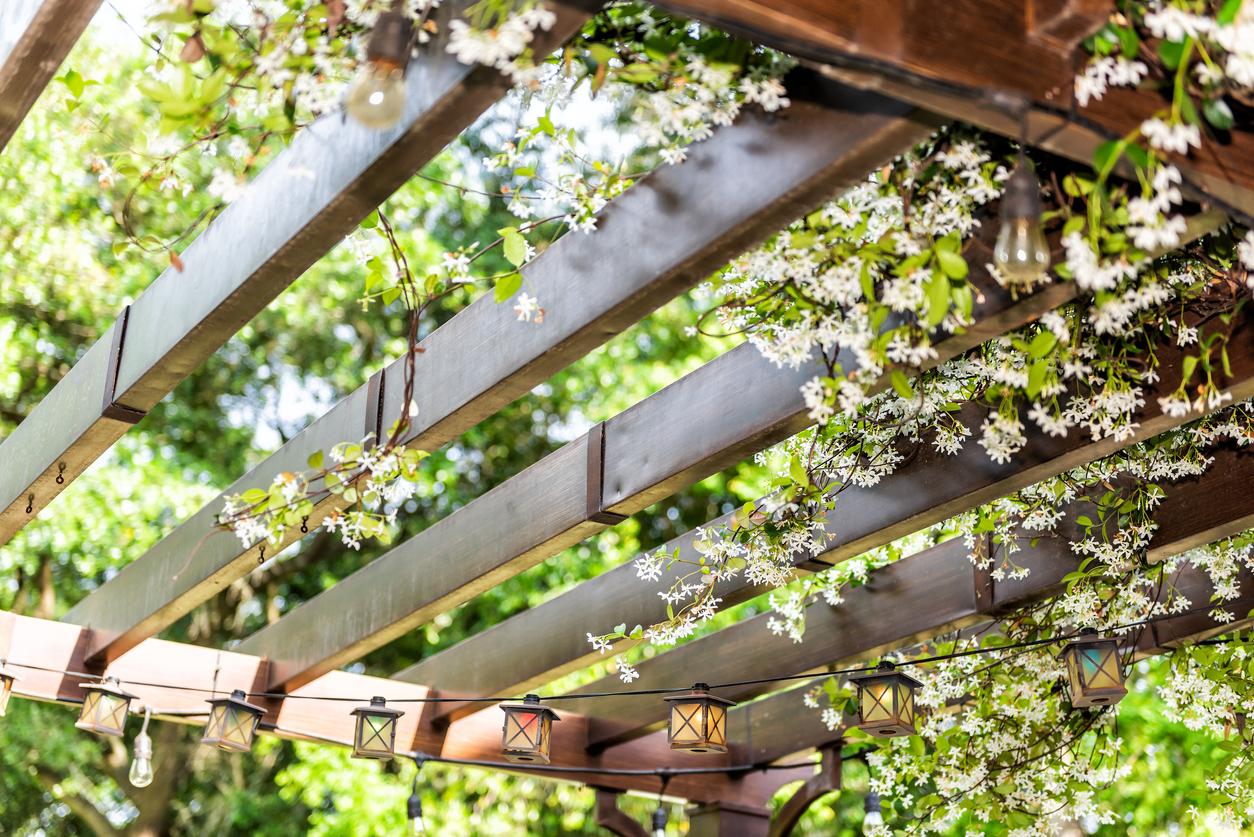The pergola is always a very popular addition to the garden. This allows you to elegantly dress your green spaces, cover a terrace for some shade or even create a pleasant barbecue area. However, in the event of poor anchoring, poor quality materials or extreme weather conditions, it is not uncommon for this shelter to collapse or for part of it to fly away and end up at a neighbor’s house after having been passage damaged the flower beds and uprooted half of the vegetable garden. We are then relieved that no one was below at the time of the disaster, but the material damage can be enormous, not to mention that you will not be able to count on home insurance to compensate you. Here’s how to prevent this incident from (re)occurring!
1) Choose a resistant pergola
Pergolas in dismountable or folding kits will be too light and not very robust for a region where there are lots of wind or difficult weather conditions (frequent bad weather, very heavy snowfalls, very strong gusts of wind, etc.). It also happens that a pergola is too heavy for the terrace where the installation is taking place. Take all these parameters into account and opt for quality materials, such as high-end aluminum. Also invest in a good covering with a quality canvas that is weather resistant or can withstand strong winds if necessary.
2) Make sure the anchoring is neat
When you are an amateur (or simply too eager to enjoy your pergola!), you can sometimes neglect the fixing stage a little. However, given the price of a pergola, this is a big mistake! A solid anchoring is essential for a stable and durable installation.

If you are installing in the lawn, you will notice that the stability will not be there until you have taken care to seal the structure with concrete. Make a deep hole, line the bottom with sand and concrete, then concrete the base. L’concrete anchor will be very useful for wood that tends to rot. For installation on a terrace, you will also need solid fixing.
3) Manage the blades well
This little gesture is not trivial. Open the adjustable slats if it is windy for good air circulation. By rushing in, he won’t take everything! A little more expensive, a bioclimatic pergola with wind sensors will be preferable in windy regions. Its adjustable slats open automatically in the event of wind.


